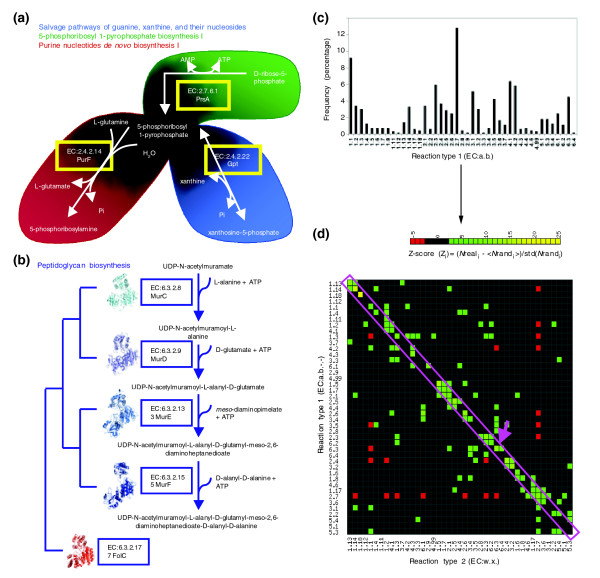Figure 1.

Preferential biochemical coupling of reactions in metabolic networks. (a) Homologous transferases PurF and Gpt from E. coli catalyze consecutive chemically similar reactions. Their origin can be explained by both the stepwise and the patchwork models. (b) Homologous ligases involved in peptidoglycan biosynthesis whose origin can be explained by both the stepwise and the patchwork models. A distant homolog (FolC) acts in folate metabolism. (c) Frequencies of reaction types (EC:a.b) in the E. coli K12 metabolic network, according to KEGG (hereafter called EcoKegg). (d) Frequencies of consecutive reaction types (EC:a.b → EC:w.x) in EcoKegg were compared against the expected values using a set of null Maslov-Sneppen models (see Materials and methods). The Z-score (color-scale bar at top) indicates the number of standard deviations between the real and the average expected frequencies. Consecutive reaction types overrepresented in real networks are shown in green-to-yellow, underrepresented ones are shown in red. The diagonal (pink box) highlights consecutive chemically similar reactions, including the ligases synthesizing peptidoglycan (pink arrow). Reaction types were sorted vertically using a hierarchical clustering to detect highly related reaction types, such as EC:1.5, EC:1.7 and EC:2.1. (center of plot).
